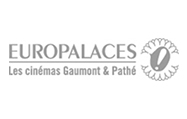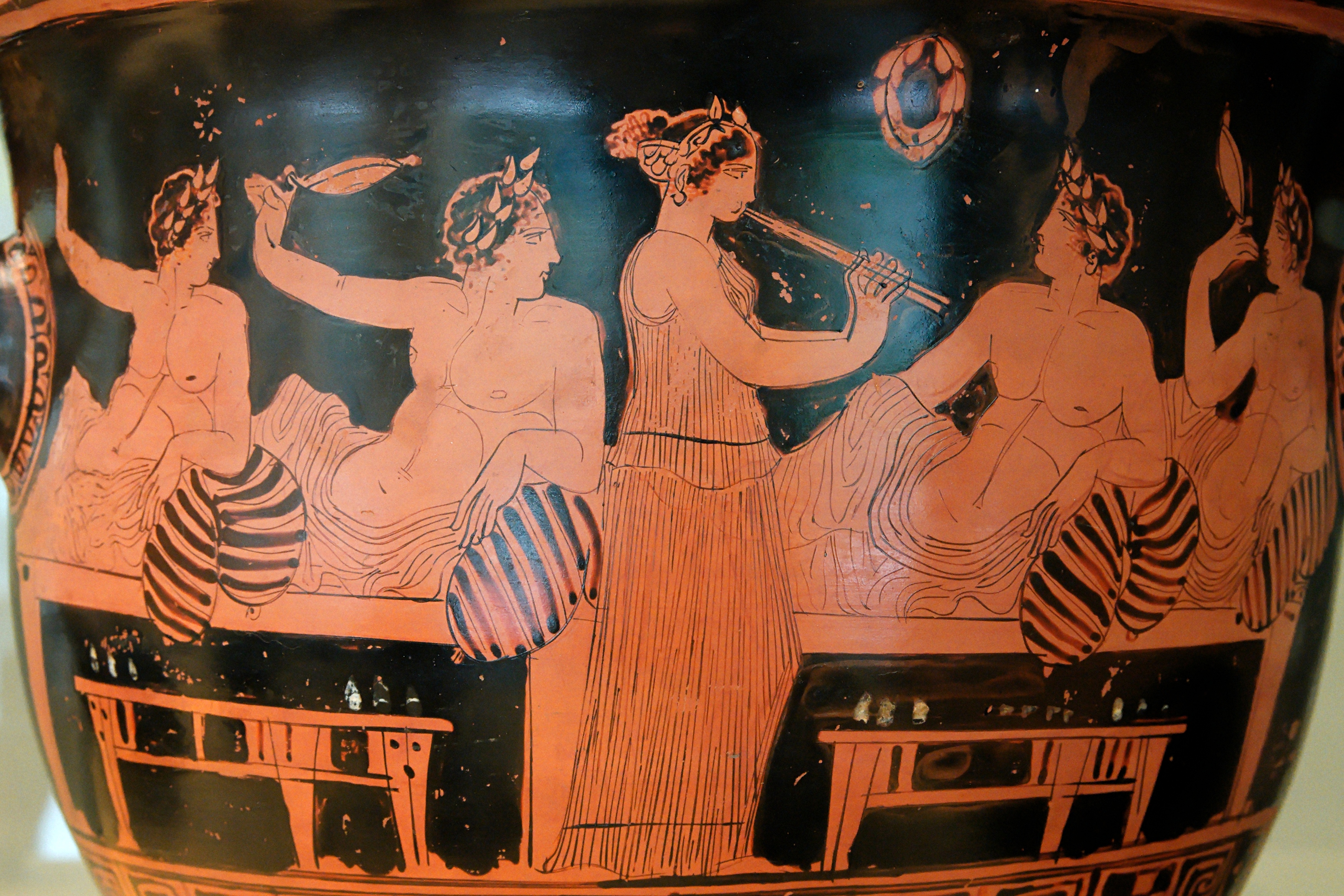|
Pathé
Pathé SAS (; styled as PATHÉ!) is a French major film production and distribution company, owning a number of cinema chains through its subsidiary Pathé Cinémas and television networks across Europe. It is the name of a network of French businesses that were founded and originally run by the Pathé Brothers of France starting in 1896. In the early 1900s, Pathé became the world's largest film equipment and production company, as well as a major producer of phonograph records. In 1908, Pathé invented the newsreel that was shown in cinemas before a feature film. Pathé is the second-oldest operating film company, behind Gaumont, which was established in 1895. History The company was founded as Société Pathé Frères (; "Pathé Brothers Company") in Paris, France on 28 September 1896, by the four brothers Charles, Émile, Théophile and Jacques Pathé. During the first part of the 20th century, Pathé became the largest film equipment and production company in the ... [...More Info...] [...Related Items...] OR: [Wikipedia] [Google] [Baidu] |
Pathé Cinémas
Pathé Cinémas SASU is a cinema chain owned by Pathé, with operations in France, the Netherlands, Switzerland, Belgium, Morocco, and Tunisia. The company is market leader in the former three. Pathé is Europe's second largest cinema chain. History EuroPalaces was formed in 2001 when the French film production and distribution companies Pathé and Gaumont merged their cinema operations, respectively owned by Jérôme Seydoux and Nicolas Seydoux. Gaumont owned 34% and Pathé owned 66% of the shares in the joint venture. In 2010, EuroPalaces was renamed Les Cinémas Gaumont Pathé. On March 1, 2017, it was announced that Gaumont sold its 34% stake in Les Cinémas Gaumont Pathé to Pathé for €380 million, Gaumont wanted to focus more on the production and distribution of content. The name of the company changed shortly thereafter to Les Cinémas Pathé Gaumont, then to Pathé Cinémas in 2023 when Pathé removed the Gaumont brand from its cinemas. The company grew its circuit ... [...More Info...] [...Related Items...] OR: [Wikipedia] [Google] [Baidu] |
Pathé News
Pathé News was a producer of newsreels and documentaries from 1910 to 1970 in the United Kingdom. Its founder, Charles Pathé, was a pioneer of moving pictures in the silent era. The Pathé News archive is known today as "British Pathé". Its collection of news film and movies is fully digitised and available online. History Its roots lie in 1896 Paris, France, when Société Pathé Frères was founded by Charles Pathé and his brothers. Charles Pathé adopted the national emblem of France, the cockerel, as the trademark for his company. After the company, now called Compagnie Générale des Éstablissements Pathé Frère Phonographes & Cinématographes, invented the cinema newsreel with ''Pathé-Journal''. French Pathé began its newsreel in 1908 and opened a newsreel office in Wardour Street, London in 1910. The newsreels were shown in the cinema and were silent until 1928. At first, they ran for about four minutes and were issued fortnightly. During the early days, ... [...More Info...] [...Related Items...] OR: [Wikipedia] [Google] [Baidu] |
Charles Pathé
Charles Morand Pathé (; 26 December 1863 – 25 December 1957) was a pioneer of the French film and recording industries. As the founder of Pathé, Pathé Frères, its roots lie in 1896 Paris, France, when Pathé and his brothers pioneered the development of the moving image. Pathé adopted the Gallic rooster, national emblem of France, the Gallic rooster, cockerel, as the trademark for his company. The firm, as Compagnie Générale des Éstablissements Pathé Frères Phonographes & Cinématographes, invented the cinema newsreel with ''Pathé-Journal''. Early life The son of a butcher shop owner, Charles Morand Pathé was born at Chevry-Cossigny, in the Seine-et-Marne ''département in France, département'' of France. His father, Jacques Pathé and mother, Thérèse-Émélie Kech were butchers by trade, and ran a delicatessen first in Chevry-Cossigny, and later in Vincennes. Charles had three brothers and two sisters. Business ventures Pathé left school at 14 to work as ... [...More Info...] [...Related Items...] OR: [Wikipedia] [Google] [Baidu] |
Newsreel
A newsreel is a form of short documentary film, containing news, news stories and items of topical interest, that was prevalent between the 1910s and the mid 1970s. Typically presented in a Movie theater, cinema, newsreels were a source of current affairs, information, and entertainment for millions of moviegoers. Newsreels were typically exhibited preceding a feature film, but there were also dedicated News cinema, newsreel theaters in many major cities in the 1930s and ’40s, and some large city cinemas also included a smaller theaterette where newsreels were screened continuously throughout the day. By the end of the 1960s News broadcasting, television news broadcasts had supplanted the format. Newsreels are considered significant historical documents, since they are often the only audiovisual record of certain cultural events. History Silent news films were shown in cinemas from the late 19th century. In 1909 Pathé started producing weekly newsreels in Europe. Pat ... [...More Info...] [...Related Items...] OR: [Wikipedia] [Google] [Baidu] |
Gaumont (company)
Gaumont SA () is a French film and television production and distribution company headquartered in Neuilly-sur-Seine, France. Founded by the engineer-turned-inventor Léon Gaumont (1864–1946) in 1895, it is the oldest extant film company in the world, established before other studios such as Pathé (founded in 1896), Titanus (1904), Nordisk Film (1906), Universal Pictures, Universal, Paramount Pictures, Paramount, and Nikkatsu (all founded in 1912). Gaumont predominantly produces, co-produces, and distributes films, and in 2011, 95% of Gaumont's consolidated revenues came from the film division. The company is also a producer of TV series through Gaumont Télévision and animation through Gaumont Animation as well as its existing French production features. Gaumont is run by Nicolas Seydoux (chairman) and Sidonie Dumas (CEO). History Originally dealing in photographic apparatus, the company began producing short films in 1897 to promote its make of camera-projector. Léon Ga ... [...More Info...] [...Related Items...] OR: [Wikipedia] [Google] [Baidu] |
American Record Corporation
American Record Corporation (ARC), also referred to as American Record Company, American Recording Corporation, or ARC Records, was an American record company in operation from 1929 to 1938, and again from 1978 to 1982. Overview ARC was created in January 1929 by Louis G. Sylvester, president of Scranton Button Company, Scranton Button Works ('Scranton'), founded 1885. Scranton owned a pressing plant that manufactured disks for many companies, including Columbia Records, Columbia labels and Emerson Records, the latter which it also owned. It then purchased Cameo Record Corporation, which owned the Cameo Records, Cameo, Lincoln Records, Lincoln and Romeo Records, Romeo labels), and six labels owned by the Plaza Music Company (Conqueror Records, Conqueror, Banner Records, Banner, Domino Records (1924), Domino, Jewel Records (New York record label), Jewel, Oriole Records (U.S.), Oriole, and Regal Records (1921), Regal). for $1 each, including liabilities. Pathé-Perfect Phonograp ... [...More Info...] [...Related Items...] OR: [Wikipedia] [Google] [Baidu] |
EMI Italiana
EMI Italiana was a record label, it was an Italian offshoot of British Electric and Musical Industries, based in Milan. It was founded in 1931 as VCM and, in 1967 it was renamed EMI Italiana followed by EMI Music Italy in 1997 and, finally, EMI Records Italy Srl in 2013, when it was acquired by Universal Music Group. History VCM's birth Since 1904, La voce del padrone records were published and distributed by ''SAIF'' (''Società Anonima Italiana di Fonotipia''), based in Milan. The British record company was actually called ''Grammofono'', but due to the famous painting by Francis Barraud "La voce del padrone" which portrays the little dog Nipper listening to a gramophone, used a trademark on the label, it soon took on this unofficial name. Meanwhile, in 1912, Alfredo Bossi (one of the first Italian record companies) had founded the ''SNG'' (''Società Nazionale del Grammofono'') also based in Milan, which in the 1920s had signed an agreement with the British record labe ... [...More Info...] [...Related Items...] OR: [Wikipedia] [Google] [Baidu] |
Mitchell Mark
Mitchel Henry Mark (1868 – March 20, 1918) was a pioneer of motion picture exhibition and movie theaters in the United States. Early life Mitchel Henry Mark was born in 1868 in Richmond, Virginia. Early in his life, he moved to Buffalo, New York, and began in the wholesale hat trade, keeping a store in Buffalo the rest of his life."M. H. Mark's Sudden Death Shocks City" ''Buffalo Evening Times'', March 21, 1918, p. 1, col. 3. ''Buffalo Architecture and History'' website. Career Early career Along with his younger brother, Moe Mark (1872–1932), Mitchel founded the Vitascope Theater (a special attraction of his[...More Info...] [...Related Items...] OR: [Wikipedia] [Google] [Baidu] |
Phonograph Record
A phonograph record (also known as a gramophone record, especially in British English) or a vinyl record (for later varieties only) is an analog sound storage medium in the form of a flat disc with an inscribed, modulated spiral groove. The groove usually starts near the outside edge and ends near the center of the disc. The stored sound information is made audible by playing the record on a phonograph (or "gramophone", "turntable", or "record player"). Records have been produced in different formats with playing times ranging from a few minutes to around 30 minutes per side. For about half a century, the discs were commonly made from shellac and these records typically ran at a rotational speed of 78 rpm, giving it the nickname "78s" ("seventy-eights"). After the 1940s, "vinyl" records made from polyvinyl chloride (PVC) became standard replacing the old 78s and remain so to this day; they have since been produced in various sizes and speeds, most commonly 7-inch discs pla ... [...More Info...] [...Related Items...] OR: [Wikipedia] [Google] [Baidu] |
Entertainment
Entertainment is a form of activity that holds the attention and Interest (emotion), interest of an audience or gives pleasure and delight. It can be an idea or a task, but it is more likely to be one of the activities or events that have developed over thousands of years specifically for the purpose of keeping an audience's attention. Although people's attention is held by different things because individuals have different preferences, most forms of entertainment are recognisable and familiar. Storytelling, music, drama, dance, and different kinds of performance exist in all cultures, were supported in Court (royal), royal courts, and developed into sophisticated forms over time, becoming available to all citizens. The process has been accelerated in modern times by an entertainment industry that records and sells entertainment products. Entertainment evolves and can be adapted to suit any scale, ranging from an individual who chooses private entertainment from a now enormous ... [...More Info...] [...Related Items...] OR: [Wikipedia] [Google] [Baidu] |
Gramophone Record
A phonograph record (also known as a gramophone record, especially in British English) or a vinyl record (for later varieties only) is an analog sound storage medium in the form of a flat disc with an inscribed, modulated spiral groove. The groove usually starts near the outside edge and ends near the center of the disc. The stored sound information is made audible by playing the record on a phonograph (or "gramophone", "turntable", or "record player"). Records have been produced in different formats with playing times ranging from a few minutes to around 30 minutes per side. For about half a century, the discs were commonly made from shellac and these records typically ran at a rotational speed of 78 rpm, giving it the nickname "78s" ("seventy-eights"). After the 1940s, "vinyl" records made from polyvinyl chloride (PVC) became standard replacing the old 78s and remain so to this day; they have since been produced in various sizes and speeds, most commonly 7-inch discs pla ... [...More Info...] [...Related Items...] OR: [Wikipedia] [Google] [Baidu] |






